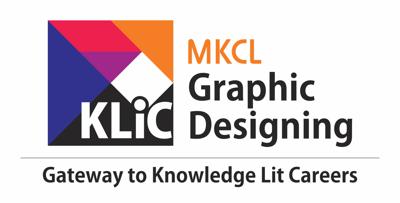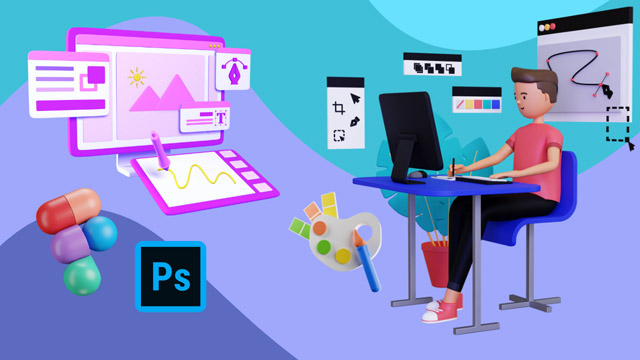- In this course, you will learn to:
- Identify and describe fundamental graphic design principles.
- Demonstrate proficiency in using design software tools like Figma and Adobe XD.
- Operate design components and styles effectively in various projects.
- Explain the importance of collaboration and version control in design workflows.
- Compare and evaluate different design techniques and methodologies.
- Predict and apply emerging design trends in practical projects.
- Discuss and analyze the role and responsibilities of a graphic designer.
- Create comprehensive design projects reflecting learned skills and principles.
- Classify various master page functionalities to effectively implement them in document design.
- Describe the process of inserting and arranging objects to create well-composed master pages.
- Identify and organize elements essential for designing inner pages and applying master pages efficiently.
- Summarize the steps involved in creating and applying object styles and paragraph styles to enhance document aesthetics.
- Discuss and explain the use of color modes and the application of colors to achieve desired visual outcomes.
- Compare and report on the effectiveness of different color application methods and tools in graphic design.
- Identify and differentiate between various anchor point adjustments to manipulate paths accurately.
- Demonstrate the ability to use the Pen tool and other path tools to create precise graphic elements.
- Operate table functionalities, modify table designs, and apply styles to enhance data presentation.
- Find and predict outcomes when applying different typesetting techniques and styles to improve readability and visual appeal.
- Examine and categorize different exporting options to determine the best formats for various design needs.
- Estimate and rate the impact of different printing settings and output options on the final printed product.

Advanced Graphics Design
Master design software and advanced composition techniques for professional-grade graphics.
Introduction
What you'll learn ?
- Interpret and illustrate fundamental graphic design principles through practical applications.
- Demonstrate proficiency in utilizing design software tools such as Figma and Adobe XD to create visually appealing designs.
- Operate design components and styles effectively across various projects, showcasing adaptability and flexibility.
- Explain the significance of collaboration and version control in design workflows, advocating for efficient project management.
- Compare and evaluate different design techniques and methodologies, selecting and defending the most suitable approach for specific design challenges.
- Predict and apply emerging design trends in practical projects, showcasing foresight and innovation.
- Discuss and analyze the role and responsibilities of a graphic designer within various contexts, critically examining industry standards and ethical considerations.
- Create comprehensive design projects that incorporate learned skills and principles, effectively applying design theory to real-world scenarios.
- Interpret the key principles of graphic design and their relevance to successful document layout and presentation.
- Illustrate complex design concepts through practical application in class projects and assignments.
- Paraphrase technical design terminology and processes to ensure clear understanding and communication within a design team.
- Transform basic design elements into sophisticated graphic compositions that effectively communicate the intended message.
- Defend design choices made during projects by providing reasoned arguments that reflect design principles and client needs.
- Compare and contrast various design methodologies and their outcomes to foster a deeper understanding of graphic design practices.
- Report on the evolution of design trends and predict future shifts in design practice.
- Restate and review design briefs and project requirements to ensure alignment with expected outcomes.
- Rewrite and refine design concepts based on feedback to improve and perfect final outputs.
- Discover innovative design solutions through experimentation with different tools, techniques, and materials.
- Construct detailed project plans that outline steps, resources, and timelines necessary for successful design execution.
- Estimate the resources and time required for various design projects to improve planning and efficiency.
- Identify and resolve design challenges using a systematic approach to problem-solving.
- Build, assemble, and compose design elements to create coherent and impactful graphic messages.
- Experiment with different styles, textures, and effects to develop a unique design voice.
- Make use of advanced design software and tools to enhance creativity and productivity.
- Utilize feedback constructively to evolve design concepts.
- Combine traditional and digital design techniques for innovative outcomes.
- Solve complex design problems with creative and effective solutions.
- Predict how design choices will be perceived by different audiences and adjust strategies accordingly.
- Survey current industry standards and practices to ensure relevance and competitiveness in the market.
- Examine case studies and real-world examples to extract valuable lessons and best practices.
- Differentiate between various design styles and genres to broaden one's design collection.
- Distinguish effective design from merely good design by applying advanced critique techniques.
- Conclude projects with a comprehensive review process that ensures all objectives are met.
- Inspect and verify the technical aspects of design projects, ensuring they meet industry and client specifications.
- Draw meaningful relationships between design theory and practice through reflective learning.
- Argue the case for innovative design approaches in traditional contexts.
- Assess, judge, and rate the effectiveness of design solutions in achieving communication goals.
- Support design decisions with empirical evidence and best practices.
- Recommend strategies for continuous improvement in design practice.
- Arrange, devise, and plan design projects to effectively utilize available resources.
- Prepare, produce, and propose comprehensive design solutions that meet or exceed client expectations.
- Set up and manage workflows to ensure efficient design processes and high-quality outputs.
- Develop, generate, and construct innovative design concepts that push creative boundaries.
Certification
- KLiC courses are recognised by Yashwantrao Chavan Maharashtra Open University (YCMOU).
- MKCL provides certificate to the KLiC learner after his/her successful course completion.
- Yashwantrao Chavan Maharashtra Open University (YCMOU) provides mark sheet to successfully passed KLiC learners (Jurisdiction: Maharashtra).
Academic Approach
The academic approach of the courses focuses on the “work-centric” education i.e. begin with work (and not from a book!), derive knowledge from work and apply that knowledge to make the work more wholesome, useful and delightful. The ultimate objective is to empower the Learner to engage in socially useful and productive work. It aims at leading the learner to his/her rewarding career as an employee or entrepreneur as well as development of the community to which s/he belongs. Learning methodology:
- Step -1: Learners are given an overview of the course and its connection to life and work.
- Step -2: Learners are exposed to the specific tool(s) used in the course through the various real-life applications of the tool(s).
- Step -3: Learners are acquainted with the careers and the hierarchy of roles they can perform at workplaces after attaining increasing levels of mastery over the tool(s).
- Step -4: Learners are acquainted with the architecture of the tool or tool map so as to appreciate various parts of the tool, their functions, utility and inter-relations.
- Step -5: Learners are exposed to simple application development methodology by using the tool at the beginner’s level.
- Step -6: Learners perform the differential skills related to the use of the tool to improve the given ready-made industry-standard outputs.
- Step -7: Learners are engaged in appreciation of real-life case studies developed by the experts.
- Step -8: Learners are encouraged to proceed from appreciation to imitation of the experts.
- Step -9: After the imitation experience, they are required to improve the expert’s outputs so that they proceed from mere imitation to emulation.
- Step-10: Emulation is taken a level further from working with differential skills towards the visualization and creation of a complete output according to the requirements provided. (Long Assignments)
- Step-11: Understanding the requirements, communicating one’s own thoughts and presenting are important skills required in facing an interview for securing a work order/job. For instilling these skills, learners are presented with various subject-specific technical as well as HR-oriented questions and encouraged to answer them.
- Step-12: Finally, they develop the integral skills involving optimal methods and best practices to produce useful outputs right from scratch, publish them in their ePortfolio and thereby proceed from emulation to self-expression, from self-expression to self-confidence and from self-confidence to self-reliance and self-esteem!
Syllabus
Evaluation Pattern
Evaluation Pattern of KLiC Courses consists of 4 Sections as per below table:
| Section No. | Section Name | Total Marks | Minimum Passing Marks |
|---|---|---|---|
| 1 | Learning Progression | 25 | 10 |
| 2 | Internal Assessment | 25 | 10 |
| 3 | Final Online Examination | 50 | 20 |
| Total | 100 | 40 | |
| 4 | SUPWs (Socially Useful and Productive Work in form of Assignments) | 5 Assignments | 2 Assignments to be Completed & Uploaded |
YCMOU Mark Sheet
Printed Mark Sheet will be issued by YCMOU on successful completion of Section 1, Section 2 and Section 3 and will be delivered to the learner by MKCL.
YCMOU Mark Sheet will be available only for Maharashtra jurisdiction learners
MKCL's KLiC Certificate
The certificate will be provided to the learner who will satisfy the below criteria:
- Learners who have successfully completed above mentioned 3 Sections i.e. Section 1, Section 2 and Section 3
- Additionally, learner should have completed Section 4 (i.e. Section 4 will comprise of SUPWs i.e. Socially Useful and Productive Work in form of Assignments)
- Learner has to complete and upload minimum 2 out of 5 Assignments
Courses Fee Structure from 01 July, 2025 Onwards
KLiC 60 hour course fee applicable from 01 July, 2025 all over Maharashtra
| KLiC Course Duration | MFO (Inclusive of GST) |
ALC Share (Service Charges to be collected by ALC) |
|---|---|---|
| 60 hours | Rs. 500/- | Rs. 2,500/- |
* Above mentioned fee is applicable for all Modes of KLiC Courses offered at Authorised Learning Center (ALC) and at Satellite Center
* Total fee is including of Course fees, Examination fees and Certification fees
* MKCL reserves the right to modify the Fee anytime without any prior notice
KLiC Courses Fee Structure upto 30 June, 2025
| Region | Total Fee (Rupees) |
| MMRDA, PMRDA and Rest of Maharashtra | 3000/- |
* Above mentioned fee is applicable for all Modes of KLiC Courses offered at Authorised Learning Center (ALC) and at Satellite Center
* Total fee is including of Course fees, Examination fees and Certification fees
* MKCL reserves the right to modify the Fee anytime without any prior notice
